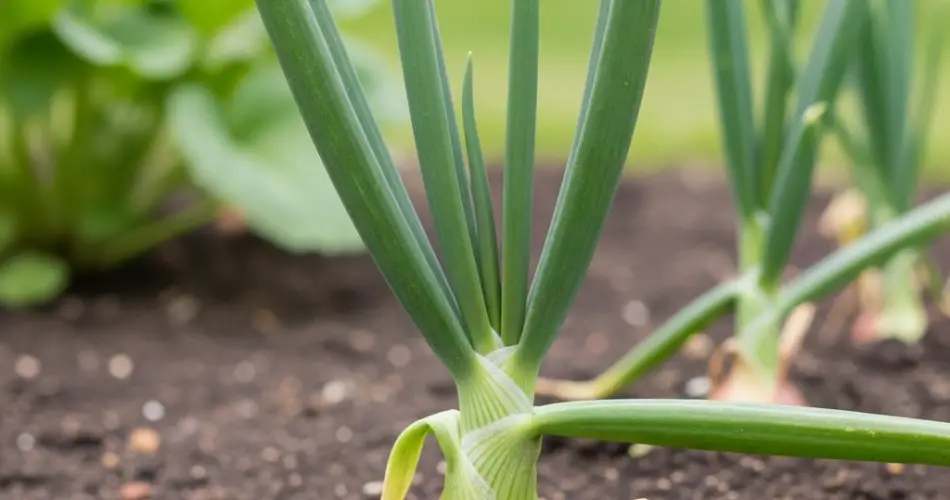Onions are a staple in most kitchens, and growing them from seeds is more rewarding than you might think. Not only do homegrown onions taste fresher, but starting from seed gives you access to more varieties than what’s typically available in garden centers. Whether you have a small backyard or a modest container garden, learning how to grow onions from seeds can be simple and productive with a few essential tips.
Why Choose Seeds Over Sets
While onion sets (small pre-grown bulbs) are popular due to their convenience, growing from seeds offers several advantages. Seeds tend to produce larger, longer-storing bulbs and are less likely to bolt prematurely. They also allow gardeners to grow heirloom or less common varieties tailored to their climate and soil.
Choose the Right Onion Variety
The first step to success is selecting the right onion variety for your region. Onions fall into three general types based on daylight sensitivity:
-
Short-day onions: Best for southern regions with mild winters. They need about 10-12 hours of daylight to start forming bulbs.
-
Intermediate-day onions: Good for middle latitudes; they require around 12-14 hours of daylight.
-
Long-day onions: Ideal for northern climates. These need at least 14-16 hours of daylight.
Check seed packets or consult local nurseries to find a variety suited for your location.
Starting Seeds Indoors
Onion seeds need a head start, especially in colder climates. Begin sowing indoors about 8–10 weeks before the last expected frost. Use seed trays or shallow containers filled with seed-starting mix. Sow the seeds about ¼ inch deep and space them closely. Keep the soil moist but not soggy and place the tray in a bright, warm area. Onions germinate best between 68°F and 75°F (20°C–24°C).
Once the seedlings emerge, give them plenty of light. If natural sunlight is limited, use a grow light to prevent weak, leggy growth. Trim the tops with scissors once they reach 5 inches tall to encourage stronger root development.
Preparing the Garden Bed or Containers
Whether you plan to transplant your onions to a garden bed or containers, choose a sunny location that receives at least 6 hours of direct sunlight daily. Onions need loose, fertile, and well-draining soil. Mix in compost or aged manure before planting to enrich the soil. Avoid compacted or clay-heavy soils, as they hinder bulb formation.
If you’re growing in containers, select pots at least 10 inches deep. Use high-quality potting mix with added compost. Make sure the containers have drainage holes to prevent waterlogging.
Transplanting Onion Seedlings
When your seedlings are the thickness of a pencil and about 6 inches tall, they’re ready to move outdoors. Harden them off by gradually introducing them to outdoor conditions over a week.
Plant the seedlings 4–6 inches apart in rows spaced 12–18 inches apart. Press the soil gently around the base of each seedling. Water them well after transplanting.
Care and Maintenance
Keep the soil evenly moist throughout the growing season, especially as bulbs begin to form. Avoid overhead watering to reduce the risk of fungal diseases. Mulching with straw or dried grass can help conserve moisture and suppress weeds.
Feed your onions with a nitrogen-rich fertilizer every 2–3 weeks until they start forming bulbs. Once bulb development begins, switch to a balanced fertilizer to encourage growth. Avoid high nitrogen during this stage, as it can delay bulb formation.
Weed regularly since onions don’t compete well with weeds. Be careful not to disturb the shallow roots while weeding.
Harvesting Onions
Onions are ready to harvest when the tops start to yellow and flop over. Stop watering at this point to help the bulbs mature and dry. After about a week, pull the onions from the ground gently.
Cure the harvested onions by laying them in a warm, dry, well-ventilated place for two to three weeks. Avoid direct sunlight, which can cause sunscald. Once the outer skins are papery and the necks are dry, trim the tops and roots.
Store the cured onions in mesh bags, crates, or any container that allows air circulation. Keep them in a cool, dry, and dark area. Properly cured onions can last for several months.
Common Problems and Tips
-
Bolting: Sudden temperature changes or planting the wrong variety can cause premature flowering. Choose the right type and keep soil conditions consistent.
-
Pests: Watch for onion maggots and thrips. Use floating row covers and rotate crops to prevent infestations.
-
Fungal diseases: Avoid overhead watering and ensure good air circulation. Use disease-resistant varieties if possible.
Growing onions from seeds may require a bit more patience, but the results are well worth it. With the right approach, even beginner gardeners can enjoy a bountiful harvest of flavorful, long-lasting onions.



